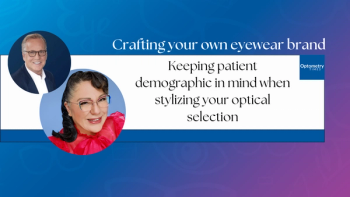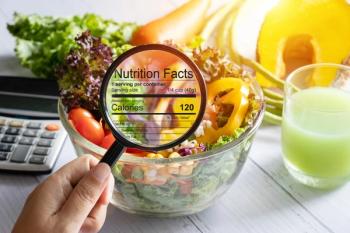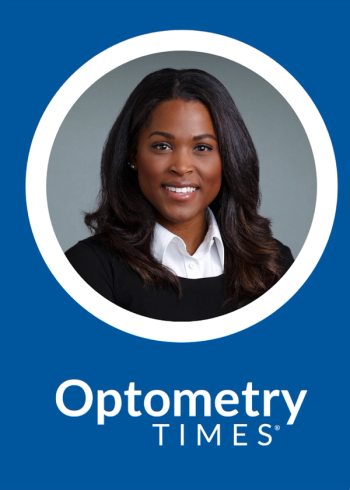
- June digital edition 2023
- Volume 15
- Issue 06
Reading the greens: Golf, vision, and nutrition
The right nutrients can give your vision—and your game—an edge.
Recreational and competitive athletes continuously search for ways to elevate their performance. In golf, a defining element of top golfers is the ability to read the contours of the green and determine the best trajectory for a successful putt. This element of golf performance is essentially a visual task, but few golfers or optometrists consider vision skills as an important factor for success in the sport.
The logical focus for performance improvements is typically in methods to enhance physical factors, such as strength and conditioning training regimens, biomechanical factors, rest and recovery programs, and psychological preparation. Although these methods are certainly important considerations, the option to improve visual performance can be a neglected element in the preparation for competition.
When putting, many visual skills may affect a golfer’s read of the green, putting alignment, and distance assessment. Coffey et al reported that ocular gaze and head position influence fixation disparity and heterophoria.1 Previously, Coffey et al found that instability of binocular visual alignment is related to errors in putting alignment.2 In another study, Coffey et al reported that contrast sensitivity, visual acuity, and stereopsis tend to be better in professional players than in amateurs.3
Similar differences were found when younger players were compared with golfers with
Refraction
The process begins with a good case history and careful refraction to understand the options to enhance visual performance on the golf course. Understanding the patient’s visual difficulties on the golf course will direct the services that can be offered. The subjective refraction should continue to the best visual acuity because many golfers may have acuity of 20/10 or better. We advocate the following prescribing guidelines (Table 2).4
Myopia. Golfers with
Astigmatism. Astigmatism has a similar effect on visual resolution as myopia, especially against-the-rule and oblique astigmatism. Refractive compensation should be considered with astigmatism of 0.5 D or more, although with-the-rule astigmatism compensation may not yield as much improvement on clinical measures.
Hyperopia. Low amounts of hyperopia are often well tolerated without correction; however, hyperopia of 1 D or more may require a significant amount of effort from the golfer to achieve and maintain clarity. Judicious refractive compensation may reduce the accommodative effort needed for the golfer to achieve optimal image clarity.
Anisometropia. Low amounts of anisometropia are not always compensated for, especially when refractive errors are low. Anisometropia of 0.5 D or more can have a detrimental effect on depth perception, and some golfers may be sensitive to that effect. Additionally, the effects of meridional anisometropia should be considered in athletes with asymmetric astigmatism. Balancing the image quality through refractive compensation will enhance sensory fusion and improve the quality of spatial localization judgments—important factors for reading the greens.
The athlete can make the decision about whether to experiment with a prescription, but these guidelines can be useful to help initiate a discussion. Ultimately, the preference is to achieve optimal visual acuity and contrast sensitivity.
Filters
Because contrast sensitivity, visual acuity, and stereopsis are better in higher-level golfers, reduced visual information due to the filter effects of some eyewear may negatively affect putting performance. Farnsworth and Smith reported that “most players did not believe sunglass tints improved golf performance, despite acknowledgment that wearing sunglasses reduced visual fatigue.”5 In fact, almost all the top golfers do not wear sunglasses when putting, despite brand endorsement deals.
Premium sports eyewear was found to have significant amounts of prism in both primary and lateral gaze.6 Results from another study found that prismatic effects induced by the lens design of sun eyewear were noticed by golfers.7 Contributing factors to prismatic effects include the steep front and back lens curves, the tilt of the lens, lens thickness, and manufacturing abnormalities (eg, induced distortion).
Prismatic effects induced by eyewear designs may affect the golfer’s ability to judge depth and location. For example, with yoked horizontal prisms, the image will be displaced laterally. However, if the prisms are oriented in opposing horizontal directions, both the perceived size and distance of the object will appear to change. Changes in lateral displacement or in apparent size and distance may cause critical errors in putting performance.
Sports vision training
Sports vision training (SVT) programs are typically designed to provide practice with demanding visual, perceptual, and sensorimotor tasks, with the goal of improving performance. There is limited and mixed support demonstrating that traditional SVT procedures can improve sports-relevant vision or manifest into better on-field performance.8 However, isolating one area of intervention as solely responsible for any changes in performance is quite difficult. Many reports in the literature are anecdotal, and many studies have significant flaws in the research design that preclude a definitive judgment.
Nutrition options
An overlooked option to improve visual performance is
Specifically, zeaxanthin (Z) and lutein (L) are plant-derived carotenoids that are concentrated in the eye and brain. L and Z are concentrated within the inner plexiform, outer plexiform, and outer nuclear layers of the
Visual effects
A systematic review and meta-analysis found evidence from placebo-controlled, double-blind clinical trials that the density of the macular pigment has an effect on glare disability and discomfort, photostress recovery, and contrast enhancement.20 Less discomfort and glare disability are reported from short-wavelength light in those with a higher concentration of macular pigment.21,22 Supplementation with L and Z has shown an improvement in glare disability that was proportional to the level of macular pigment increase.22-24
The same trend can be seen with photostress recovery following exposure to bright light and visual discomfort.23,24 These results are consistent with recent findings in an older population who consumed a carotenoid vitamin supplement with L, Z, and other phytochemicals.25 The ability to perform optimally under intense glare conditions may be improved by increasing macular pigment density. This is particularly important in golf because glare and variable shadows can significantly increase the difficulty in reading the green.
Recent research has demonstrated a linear relationship between macular pigment density and contrast enhancement.26 Because the macular pigments selectively filter short-wavelength light, it has been proposed that those with a higher density of macular pigments have an expanded visible range (approximately 30%) due to the preponderance of short-wavelength light in the atmosphere.27 Therefore, the ability to detect a golf ball against a blue sky is enhanced with increasing macular pigment.
Although the effect of carotenoid supplementation on color vision has not been directly examined in golfers, a prior report has shown that in individuals with type 1 or type 2 diabetes, color vision can be enhanced using a carotenoid vitamin supplement rich in L and Z.28 Results from these studies make a strong case for L and Z supplementation and benefits/improvements in visual functions that could be particularly important in golf.
Neural effects
Although the presence of L and Z in the macula is well recognized, these carotenoids also concentrate in the brain. Randomized, double-masked, placebo-controlled clinical trials of young, healthy patients have shown that macular pigment density is linked to L and Z levels in the brain,29 and the level present is related to functions such as cognition, reaction time, and temporal visual processing.30-32 L and Z are incorporated in cell membranes and axonal projections, which enhance interneuronal and neuroglial communication.33
Recently, supplementation with carotenoids has been shown to increase critical flicker frequency thresholds, visual-motor reaction time, and temporal contrast sensitivity function compared with a placebo control group, improving processing speed by an average of 10% to 20%.31,32 Nutritional support for cognitive function may be an additional long-term benefit for golfers.
Athlete recommendations
To help golfers achieve optimal visual performance, recommendations should include modifications to diet to increase intake of carotenoids or supplementation with purified forms of L and Z. Results from placebo-controlled studies have found that macular pigment density can be increased by an average of approximately 20% with supplementation.21,22
Recent studies have used 10 to 20 mg of dietary Z in the supplements for those who are young and healthy compared with lower concentrations for age-related conditions (the Age-Related Eye Disease Study 2 formula has only 2 mg of Z).23,31,32 For competitive athletes, care should be taken to recommend supplements that have been certified for content, especially to avoid substances banned in sports.
We recommend checking the National Sports Forum website to identify supplements that are certified for sports (https://www.nsfsport.com). In addition to the visual and cognitive performance improvements found with supplementation, evidence exists that L and Z have protective effects for the retina from photo-oxidative damage.
Summary
Optometrists have several options to help recreational and competitive golfers enhance their visual performance on the golf course. Optometrists should provide optimal vision correction and assist patients with a decision about sun eyewear for golf. For those golfers who experience difficulties with glare, photostress, and contrast judgment, increasing macular pigment density offers another potential method to improve these functions by enriching natural physiology.
Many golfers prefer to remove any sun eyewear when reading the green and putting. Improved macular pigment density can help with glare disability and when moving between bright light and shadow. It may be that improvement in L and Z concentrations in the macula can provide enhanced visual function without the reduction in overall luminance that occurs with external filter use. It is likely that many golfers have not received information about the potential benefits of increasing carotenoid intake or supplementation.
Optometrists can provide information to help patients understand the role these nutrients play in the health and performance of their eyes and offer guidance on effective use of supplements.
This article has focused on the options for improving visual performance in golfers; however, these improvements may be applied to many other patients. Improving visual performance would clearly be advantageous to many daily activities, such as driving or playing video games. There are potential benefits for those in occupations such as law enforcement, firefighting, piloting, and the military. Optometrists have many options to help optimize visual performance for all patients.
References
1. Coffey B, Reichow AW, Colburn PB, Clark DL. Influence of ocular gaze and head position on 4 m heterophoria and fixation disparity. Optom Vis Sci. 1991;68(11):893-898. doi:10.1097/00006324-199111000-00011
2. Coffey B, Mathison T, Viker M, Reichow AW. Visual alignment considerations in golf putting consistency. In: Cochran AJ, ed. Science and Golf: Proceedings of the First World Scientific Congress of Golf. E & FN Spon; 1990:76-80.
3. Coffey B, Reichow AW, Johnson T. Visual performance differences among professional, amateur, and senior amateur golfers. In: Cochran AJ, Farrally M, eds. Science and Golf II: Proceedings of the World Scientific Congress of Golf. E & FN Spon; 1994:168-173.
4. Erickson G. Prescribing for the Athlete. In Erickson G: Sports Vision: Vision Care for the Enhancement of Sports Performance. 2nd ed. Elsevier; 2021:84.
5. Farnsworth C, Smith S. Sunglasses. Golf Digest 1999; 50(8):13-15.
6. Cooper SC, Smith JA, Katz M, Preston J. Nonprescription tinted eyewear optical accuracy study. Optometry. 2001;72(8):510-518.
7. Erickson GB, Johnson M, Marcuson J, Anderson J, Horn FC. Induced prismatic effects in commercially available non-prescription golf sun eyewear. Optom Vis Dev. 2007;38(4):153-159.
8. Appelbaum LG, Erickson G. Sports vision training: a review of the state-of-the-art in digital training techniques. Int Rev Sport Exerc Psychol. 2018;11(1):160-189. doi:10.1080/1750984X.2016.1266376
9. Krinsky NI, Landrum JT, Bone RA. Biologic mechanisms of the protective role of lutein and zeaxanthin in the eye. Annu Rev Nutr. 2003;23:171-201. doi:10.1146/annurev.nutr.23.011702.073307
10. Landrum JT, Bone RA. Lutein, zeaxanthin, and the macular pigment. Arch Biochem Biophys. 2001;385(1):28-40. doi:10.1006/abbi.2000.2171
11. Davey PG, Rosen RB, Gierhart DL. Macular pigment reflectometry: developing clinical protocols, comparison with heterochromatic flicker photometry and individual carotenoid levels. Nutrients. 2021;13(8):2553. doi:10.3390/nu13082553
12. Davey PG, Alvarez SD, Lee JY. Macular pigment optical density: repeatability, intereye correlation, and effect of ocular dominance. Clin Ophthalmol. 2016;10:1671-1678. doi:10.2147/OPTH.S111708
13. Lem DW, Davey PG, Gierhart DL, Rosen RB. A systematic review of carotenoids in the management of age-related macular degeneration. Antioxidants (Basel). 2021;10(8):1255. doi:10.3390/antiox10081255
14. Lem DW, Gierhart DL, Davey PG. A systematic review of carotenoids in the management of diabetic retinopathy. Nutrients. 2021;13(7):2441. doi:10.3390/nu13072441
15. Lem DW, Gierhart DL, Davey PG. Carotenoids in the management of glaucoma: a systematic review of the evidence. Nutrients. 2021;13(6):1949. doi:10.3390/nu13061949
16. SanGiovanni JP, Chew EY, Clemons TE, et al; Age-Related Eye Disease Study Research Group. The relationship of dietary carotenoid and vitamin A, E, and C intake with age-related macular degeneration in a case-control study: AREDS report no. 22. Arch Ophthalmol. 2007;125(9):1225-1232. doi:10.1001/archopht.125.9.1225
17. Age-Related Eye Disease Study 2 Research Group. Lutein + zeaxanthin and omega-3 fatty acids for age-related macular degeneration: the Age-Related Eye Disease Study 2 (AREDS2) randomized clinical trial. JAMA. 2013;309(19):2005-2015. doi:10.1001/jama.2013.4997
18. Chew EY, Clemons TE, SanGiovanni JP, et al; Age-Related Eye Disease Study 2 (AREDS2) Research Group. Secondary analyses of the effects of lutein/zeaxanthin on age-related macular degeneration progression: AREDS2 report no. 3. JAMA Ophthalmol. 2014;132(2):142-149. doi:10.1001/jamaophthalmol.2013.7376
19. Chew EY, SanGiovanni JP, Ferris FL, et al; Age-Related Eye Disease Study 2 Research Group. Lutein/zeaxanthin for the treatment of age-related cataract: AREDS2 randomized trial report no. 4. JAMA Ophthalmol. 2013;131(7):843-850. doi:10.1001/jamaophthalmol.2013.4412
20. Johnson EJ, Avendano EE, Mohn ES, Raman G. The association between macular pigment optical density and visual function outcomes: a systematic review and meta-analysis. Eye (Lond). 2021;35(6):1620-1628. doi:10.1038/s41433-020-01124-2
21. Stringham JM, Hammond BR Jr. The glare hypothesis of macular pigment function. Optom Vis Sci. 2007;84(9):859-864. doi:10.1097/OPX.0b013e3181559c2b
22. Stringham JM, Hammond BR. Macular pigment and visual performance under glare conditions. Optom Vis Sci. 2008;85(2):82-88. doi:10.1097/OPX.0b013e318162266e
23. Hammond BR, Fletcher LM, Roos F, Wittwer J, Schalch W. A double-blind, placebo-controlled study on the effects of lutein and zeaxanthin on photostress recovery, glare disability, and chromatic contrast. Invest Ophthalmol Vis Sci. 2014;55(12):8583-8589. doi:10.1167/iovs.14-15573
24. Stringham JN, Garcia PV, Smith PA, McLin LN, Foutch BK. Macular pigment and visual performance in glare: benefits for photostress recovery, disability glare, and visual discomfort. Invest Ophthalmol Vis Sci. 2011;52(10):7406-7415. doi:10.1167/iovs.10-6699
25. Richer S, Novil S, Gullett T, et al. Night vision and carotenoids (NVC): a randomized placebo controlled clinical trial on effects of carotenoid supplementation on night vision in older adults. Nutrients. 2021;13(9):3191. doi:10.3390/nu13093191
26. Renzi LM, Hammond BR. The effect of macular pigment on heterochromic luminance contrast. Exp Eye Res. 2010;91(6):896-900. doi:10.1016/j.exer.2010.09.015
27. Wooten BR, Hammond BR. Macular pigment: influences on visual acuity and visibility. Prog Retin Eye Res. 2002;21(2):225-240. doi:10.1016/s1350-9462(02)00003-4
28. Chous AP, Richer SP, Gerson JD, Kowluru RA. The diabetes visual function supplement study (DiVFuSS). Br J Ophthalmol. 2016;100(2):227-234. doi:10.1136/bjophthalmol-2014-306534
31. Bovier ER, Renzi LM, Hammond BR. A double-blind, placebo-controlled study on the effects of lutein and zeaxanthin on neural processing speed and efficiency. PLoS One. 2014;9(9):e108178. doi:10.1371/journal.pone.0108178
32. Bovier ER, Hammond BR. A randomized placebo-controlled study on the effects of lutein and zeaxanthin on visual processing speed in young healthy subjects. Arch Biochem Biophys. 2015;572:54-57. doi:10.1016/j.abb.2014.11.012
33. Stahl W, Sies H. Effects of carotenoids and retinoids on gap junctional communication. Biofactors. 2001;15(2-4):95-98. doi:10.1002/biof.5520150209
Articles in this issue
over 2 years ago
The role of nutrition in myopia controlover 2 years ago
ASCRS 2023 innovation highlightsover 2 years ago
Keeping an eye on geographic atrophyover 2 years ago
Into the periphery with lattice retinal degenerationover 2 years ago
A funny thing happened at the office: Part 2over 2 years ago
Comanagement of patients with keratoconusover 2 years ago
Stating the facts about combination myopia management treatmentsNewsletter
Want more insights like this? Subscribe to Optometry Times and get clinical pearls and practice tips delivered straight to your inbox.



















































.png)


